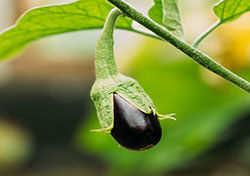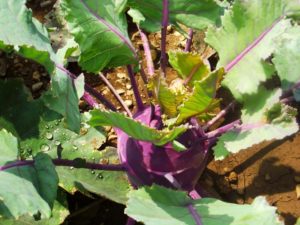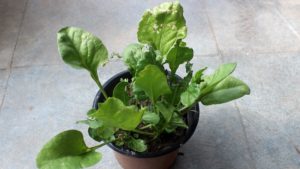You’re lying if you say you don’t know who Popeye is. He’s the wisecracking sailor who is always ready to save the day with a trusty can of spinach to boost him up. He know how to grow his spinach, and now you can also grow spinach at home.
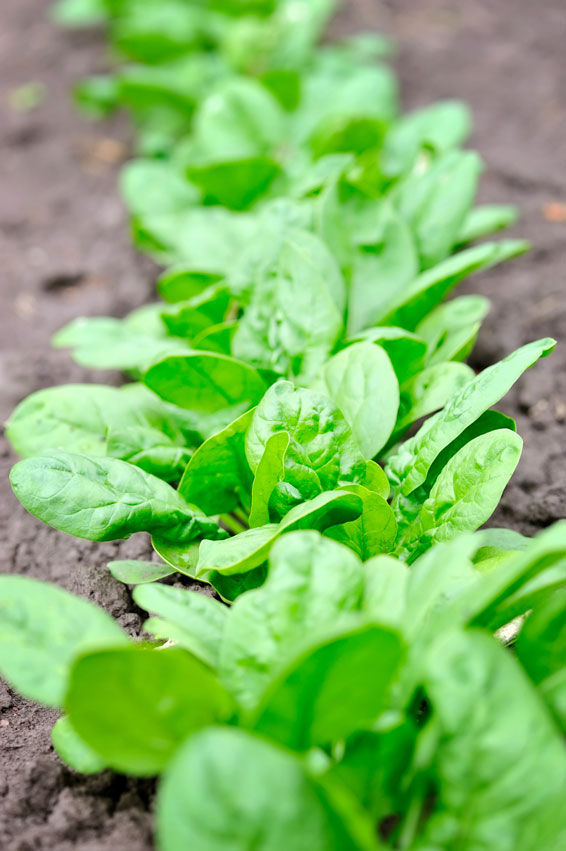
First of all, spinach is indeed a very nutritious vegetable.
Some even consider it as a superfood and why not? Not only does it effectively restore energy and improve blood quality, but it also boosts vitality! (just like a real-life power-up, thank you Popeye)
This cool-weather crop is packed with vitamins (like vitamins K, A & C) and is also rich in iron and magnesium.
The nitrates present in it also helps in building muscles and improves cholesterol.
[oxilab_flip_box id=”4″]
Oh, and did I mention it’s a tasty treat as well?
Spinach is perfect for salads and is definitely a delicious addition to any stir-fry. And there are a ton of pasta recipes that spinach will really go well with.
Guess what! I have one in my garden.
I’ve been growing spinach at home for a long time now. And trust me, it will be a perfect addition to your garden too.
They’re just one of the most rewarding crops to grow. And so far, I’ve had a satisfying experience growing them myself so I thought I could share some tips with you guys.
Let me guide you on how to grow spinach from the comfort of your own home.
And if you’re new to this, don’t worry! This handy crash-course will help you step by step.
Make Popeye proud and get ready to grow your own spinach!
Things You Should Know About Growing Spinach
Before you start this little plant project, there are a couple of things you should know.
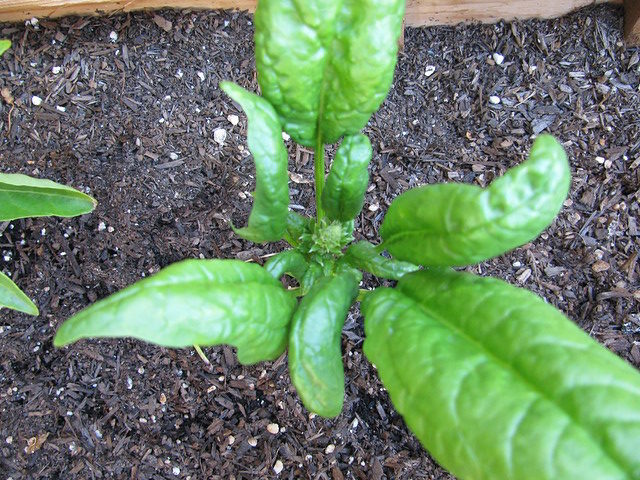
Spinach is kind of a tricky plant to grow.
But don’t panic.
This cool-weather crop is a fast-growing one so you know it’s going to be very rewarding once you get the hang of it.
I said that growing spinach is tricky because timing will be very essential when you take on this project.
If you start too late, you will only be rewarded with failed bolting plants that you can’t harvest.
Promise me you will never make that mistake.
For a successful harvest, you need to sow spinach seeds as soon as you can in the spring.
By doing so, you’ll remove a big chance of your crop failing.
After that, you will see that growing spinach is easy after all.
It’s a low maintenance crop that is effortless to grow from seed. I promise that you’re gonna have a great time growing spinach on your own.
Any budding gardeners out there can definitely take on this challenge.
And you have me! I will do my best to help you from planting, growing and harvesting!
So just relax, I’ve got your back.
I’ve made you a detailed guide to growing Spinach at home so you’ll be sure that all the information you’ll ever need will be compiled here in one place.
All you need to do now is continue reading.
Good luck gardeners!
How to Grow Spinach
When is the best time to plant spinach?
Before you start the preparation for your home-grown spinach plant, be sure you are doing it in the right month or season.
Like I mentioned earlier, spinach is a tricky plant to grow so timing is everything.

It’s best to start growing it in Spring, focus on growing it in cooler months.
Hot weather and just the general longer days trigger the spinach plant to bolt quickly so you should sow spinach seeds as much as possible in early Spring.
If you do want to grow spinach twice a year, I suggest you plant it in about 4 to 6 weeks before the last frost in the spring.
Sow the next batch of seeds again in about 6 to 8 weeks before the first frost in the fall.
Basically, it is vital to give spinach the required six weeks of cool weather from seeding to harvest for a successful crop.
Remember timing is everything!
Should I use a spinach seed or a nursery plant?
Now that you know the best time to plant spinach, it’s time to start preparing.
The first thing you’ll need is fresh spinach seeds.
In general, spinach seeds do not store well, so it is important to buy and use fresh seeds every year. I’ve tried the ones from Amazon and they were fantastic.
It germinated well and grew wonderfully. It was definitely a great choice.
I’ve also seen other gardeners sow seeds indoors before transplanting them into the main garden, but I do not recommend this.
Especially for beginners, seedlings are very difficult to transplant.
There’s also the possibility that the seedlings may suffer transplant shock if the roots are disturbed while transplanting.
What is the best container to use when planting spinach?
Once you have fresh spinach seeds, you’ll be needing a proper container. Lucky for you there are two options you can choose from. Pick the one that will suit your taste and fit in your space.
Raised Bed
If you already have a raised bed ready, good for you! Planting spinach on a bed raised 8 inches tall and 3 feet wide will have great results. By using this style, you can keep the moisture intact. This is also perfect when your soil is slow-draining.

Pots
If you have a small space or just starting out your home garden, spinach is perfect for container gardening as well. An 8-inch pot can hold one plant and you can plant spinach on 10-inch centers in large containers.
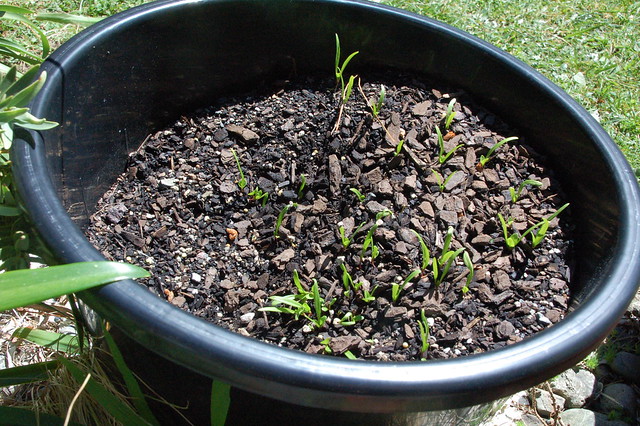
How do I prepare the soil?
Spinach develops effectively and faster in well-drained, moist, light and nitrogen-rich loamy soil. Use soil rich in organic matter (compost/composted manure) and with a pH of 6.5 to 7.
After making sure that your soil has the qualities that I’ve mentioned above, here are some tips to follow:
- Prepare the garden soil with aged manure (or any trusted compost and organic granular fertilizer) about a week before the actual planting. Or you can also opt to prepare your soil in the fall so you can plant your spinach seeds outdoors as soon as the ground thaws in early spring.
- Loosen the soil at least 1 foot deep.
How do I plant spinach?
Like I’ve said earlier, spinach doesn’t do well by being transplanted, so it is best to just plant the seeds directly in the garden rather than sowing seeds indoors and transplanting them later.

Assuming you’ve already prepared the soil as instructed above, follow these short steps on planting the spinach seeds:
- Soak the seeds for several hours before planting (for quicker germination)
- Sow spinach seeds ¼ to 1 inch deep
- Space seeds at least 2” apart (if you want to skip thinning, space them 4-6” apart)
- Cover the seeds lightly with soil
- Gently press down the soil
- Water until the soil is evenly moist and not soggy
Congratulations! You’re done with the planting part.
Check over your work. Spinach plants are greedy eaters so it’s important to give them enough space so the seedlings won’t have to compete with each other for light, water, and nutrients.
This also gives them enough room to reach their full size.
Growing Spinach
How and when do I thin my spinach plant?
If you see your seedlings overcrowding, it’s time to thin your plant. Overcrowding stunts the growth of your spinach plant. Thinning seedlings can prevent that.
Once the seedlings sprout to about two to three inches tall and they have at least two true leaves, thin seedlings to four to six inches apart.
How can I properly water my spinach plant?
After the initial watering of your spinach plant during the planting stage, water your new plants regularly in spring.
Again, spinach thrives in evenly moist soil not soggy or wet ones. I’m emphasizing this because water stress can cause your plants to bolt.
So make sure you’re not overwatering them—just enough to keep the soil moist.
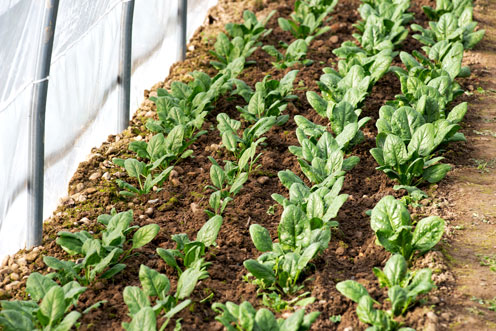
Water spinach every other day, making sure that the soil is moist.
Consistent moisture will guarantee healthy growth and prevent the spinach from bolting. If you are in a warm region, mulch around plants to slow the evaporation of the soil’s moisture.
Which fertilizer should I use and when do I use it?
Spinach plants are low maintenance crops so I suggest that you fertilize your spinach plants only if necessary—when you observe a slow growth or when your soil pH is inadequate.
However, I do see the advantages of fertilizing the plants in its early stages. After all, spinach plants are heavy feeders so it’s always a good idea to give them extra nutrients.
When I see my plants having their true leaves, I start giving them fertilizers.
I like using this organic liquid fertilizer that I got from Amazon.
It pairs really well with the soil I’ve prepared and helps in producing the leafiest spinach harvest. Truly an excellent plant food that is definitely worth your try!
If you can’t wait for your order, you always use a compost tea bag or fish emulsion for fertilizer.
Just make sure your plant has at least 4 true leaves before using it.
How much sun does my spinach plant need?
Spinach grows best in full sun or partial shade, obviously, it thrives outdoors. A leafy vegetable like spinach needs about four hours of sunlight per day.
However, prolonged exposure to sunlight, especially in hot climates, triggers them to bolt.
In the afternoon or when you observe the temperature goes above 80 degrees, cover the crop with shade cloth.
Which climate better suits spinach? (Best Hardiness Zones)
As mentioned before, spinach is a cool-weather crop, it thrives in early spring and fall and has a hard time growing in summer with extreme heat as an obstacle.
The increasing day length in warm temperatures causes the spinach to bolt. Bolting is when the spinach forms flowering stalks and goes to seed, resulting in a failed crop.
Trust me, when it bolts, your crop will become tough and bitter.
The cool weather, on the other hand, with its shorter days, creates a perfect climate for the spinach to grow healthily.
Especially when the daytime temperature remains consistently below 75°F– which happens commonly in spring or fall.
Basically, Spinach is generally suitable for the U.S. Department of Agriculture hardiness zones 2 through 9.
How long does it take to grow spinach?
What I love the most about this leafy vegetable is how fast it grows. Look, if you followed the tips and guidelines I’ve mentioned above, your seeds will germinate in just five to nine days.
Overall, you will only be needing six weeks of cool weather from seed sowing to harvest!
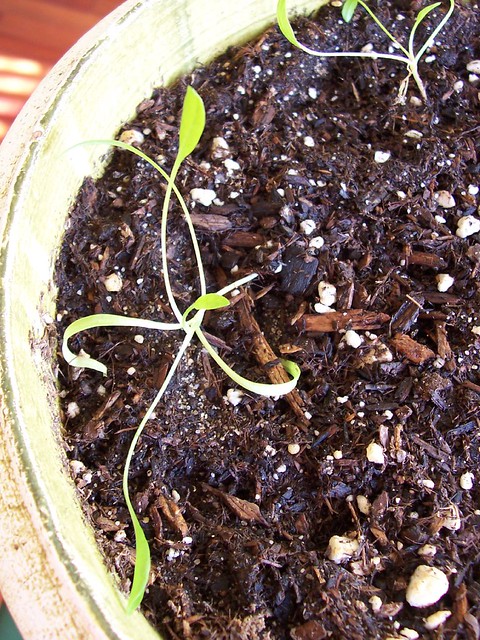
Isn’t it amazing how spinach is ready for picking in just about 40 to 52 days? You can even harvest earlier if you like baby spinach.
If you plant your spinach with the right timing, there’s very little for you to be worried about.
As I’ve said, it’s a low maintenance crop perfect for both veterans and budding gardeners alike.
What are the common diseases and pests that could ruin my spinach plant and how do I avoid it?
As you watch your spinach plant to grow, I understand that you might worry about the pests or other diseases that might attack your plant.
However, one of the perks of planting in early spring is that there are fewer pest problems in cool weather.
Though I’m not saying spinach comes with no problem at all, here are some of the common diseases and pests of growing spinach:
- Leaf miners
Leaf miner larvae typically burrow inside the leaves and create nasty tan patches or lightly-colored blotches. If you see one, pick and destroy this foliage. One thing to do to avoid this is by keeping your garden clean of leaf debris.
Young spinach plants are vulnerable to this. To protect young spinach plants from leaf miners, use floating row covers but make sure first that the temperatures are moderate. When the chilly weather comes, you may remove the covers.
After your spinach harvest, make sure you turn your planting bed (if you used one) in order to destroy the larvae in the soil.
- Spinach blight
This is a virus spread by aphids. It causes a yellowing of the leaves of your spinach plant. It can also stunt your plant. Avoid this disease by planting resistant cultivars. - Downy mildew
You can spot this disease when you observe yellow spots on leaf surfaces and patches of mold on the underside. This nasty problem occurs during very wet weather. Avoid this disease by planting resistant cultivars. - Fleas, aphids, and slugs
Keep your garden clean and always remove and destroy the affected leaves to prevent the adult flies from multiplying and further affecting the crop. Slugs also love to feed on your precious spinach so always be on the lookout for these critters. - Bolting
This is probably your most common enemy when growing spinach since this cold-weather vegetable is prone to bolting.
Your spinach plant will bolt in warm temperatures and increasing day length as I’ve discussed before. Make sure that your plant is protected with a shade, prolonged exposure to heat and sun (13 hours of sunshine or more) will trigger bolting.
However, when you see your spinach bolting, do not panic.
You should take this time to harvest the plant more aggressively. Cut back the plants that are bolting. This will encourage the plant to focus more of its energy to more leaf production.
On the other hand, if temperatures have not started to warm and a central stalk starts to form it is better to just cut the whole plant back to just above the soil line and let the leaves regrow.
For the budding gardeners out there, approach each problem with a calmer attitude. I know I’ve had my own share of panicking when I just started gardening.
I’m grateful that over these mistakes, I’ve learned to pay more attention to my plants.
I’ve also come to terms that I will always encounter a problem with my garden and that fortunately, there’s always a solution waiting from other fellow gardeners!
Don’t be a stranger and mingle with the gardening community.
What other crops could I plant together with my spinach to maximize my garden space?
Are you familiar with companion planting?
It’s a form of polyculture used by fellow gardeners and farmers that is believed to produce mutual benefits for certain crops planted next to each other.
The idea is these companion plants can help each other grow while maximizing your garden space.
Score!
Some of the benefits include natural pest control, higher crop yield and shade protection for sun-sensitive plants.
For example, planting radishes close to your spinach will help draw away the leafminers disturbing your plant while the radishes grow healthy and safely underground.
Here are some crops that will like being close with your spinach:
- Cabbage
- Celery
- Eggplant
- Lettuce
- Leeks
- Pea
- Swiss Chard
- Radishes
- Tomatoes
- Peppers
What are the crops that will not go well with spinach?
While spinach has a number of great companion plants we should be thankful for, there are just some crops that will never go well with this vegetable.
Here are some of the spinach’s bad neighbors:
- Leeks
- Strawberries
- Potatoes
- Grapefruit
Harvesting Spinach
How do I harvest spinach?
Finally! You’ve reached the stage where you can taste the sweet sweet victory after weeks of effort. It’s harvest time!
Spinach is usually ready to harvest in 40 to 52 days or even earlier if you want to harvest baby spinach.

It’s one of my favorites, baby spinach leaves are just so tender and not to mention, tasty.
When to Harvest Spinach?
Start harvesting spinach when you see your spinach plant having at least six leaves that are 3 inches long. This usually happens in six to eight weeks.
Carefully pick and cut the outer leaves first when they’re large enough to eat so the inner leaves will continue to grow.
This will extend harvests, particularly with fall and winter crops.
Though you should never wait too long to harvest or even for bigger leaves, bitterness will set in quickly after maturity.
Another thing that proves timing is everything with this plant.
You can also choose to cut the entire plant just below the soil level with a garden knife is you see signs of bolting.
By harvesting the entire crop, you will encourage the plant to regrow giving you a fresh start.
Always keep an eye on your crops.
Harvest spinach when leaves reach the desired size.
Lucky for you, spinach is a crop that you can harvest over and over again! Even if you strip most of the leaves from the plant, the crop will grow new leaves in no time at all!
As long as the plant hasn’t started continuously bolting, you can harvest from it.
What is the best way to store the spinach that I have harvested?
Spinach stores really well.
You can plant and harvest during the cold months and you’ll have enough that will last you for a long long time.
This plant also freezes really well. If you haven’t tried adding frozen spinach to your smoothie, you’re missing out.
It’s a perfect sneak vegetable to add so your kids won’t know what hit them.
This plant also freezes really well. If you haven’t tried adding frozen spinach to your smoothie, you’re missing out.
It’s a perfect sneak vegetable to add so your kids won’t know what hit them.
Store your harvested spinach cold and moist, 32°-40°F (0°-5°C). Make sure there is 95 percent relative humidity.
Place spinach in the refrigerator in a perforated plastic bag in the vegetable crisper section.
Spinach will stay fresh in the refrigerator for about 10 days.
If you store your spinach for too long or place it somewhere too cold, it will develop brown spots on the midrib and the leaves will wilt and turn yellow.
Featured Table
| Botanical Name | Spinacia oleracea |
| Plant Type | Vegetable |
| Sun Exposure | Full Sun |
| Soil Type | Loamy |
| Soil pH | Neutral |
| Bloom Time | Spring |
| Flower Color | Yellow-green |
| Hardiness Zones | 2, 3, 4, 5, 6, 7, 8, 9 |



